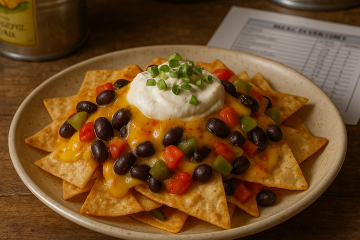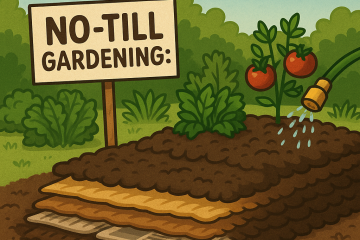 I get asked the question about the nutritional difference between freeze-dried and dehydrated food a LOT. So I thought it was about time I took a moment and answered the question real quick.
I get asked the question about the nutritional difference between freeze-dried and dehydrated food a LOT. So I thought it was about time I took a moment and answered the question real quick.
Both dehydrated and freeze-dried foods are excellent options for long-term storage and convenience, but they do differ in terms of their nutritional profiles and processing methods. Here’s a detailed look at the differences:
Dehydrated Foods
Processing: This is the food dehydrator I have and love. Nesco. I got the one with the 8 trays so that I could do more food at one time, but you can save a lot of money and just get the 4 tray option.
- Method: Dehydration involves removing water from food using heat, often at temperatures between 120-140°F (49-60°C).
- Time: This process can take several hours to days.
- Texture: Dehydrated foods typically become tough and leathery.
- Water Consideration: Dehydrated foods typically require more water to reconstitute because of their leathery exterior
Nutritional Impact:
- Nutrient Loss: Some vitamins, especially vitamin C and B vitamins, are sensitive to heat and can be lost during the dehydration process.
- Fiber and Minerals: These generally remain intact.
- Calories: Dehydrated foods can be more calorie-dense because of the reduction in water content.
Freeze-Dried Foods
Processing: Of course, if you’re going to have your own freeze-dryer, then Harvest Right Freeze-Dryer is the way to go. It’s a bit steep initially, but it will save you lots of money in the long run. I know of several families who go in on it together and share the use thereof. 
- Method: Freeze-drying involves freezing the food and then reducing the surrounding pressure to allow the frozen water in the food to sublimate directly from the solid phase to the gas phase.
- Time: This process can also take several hours but is often quicker than traditional dehydration.
- Texture: Freeze-dried foods are light and airy, with a texture that can easily be rehydrated to its original state.
- Water Consideration: Freeze-dried foods require sitting in water for a time in order to reconstitute, however, if you’re saving the liquid from your canned vegetables, etc. you can reconstituted them in that liquid and make your dishes all the better for having done so. Also, don’t discard the water that isn’t used when reconstituting your freeze-dried foods. Keep that valuable and tasty water in a “Vegetable Water” or “Fruit Water” jar in the fridge and use it for future recipes. Yum!
Nutritional Impact:
- Nutrient Preservation: Freeze-drying retains most of the food’s original nutrients because it occurs at low temperatures. Vitamin C, A, and other heat-sensitive nutrients are better preserved compared to dehydration.
- Flavor and Color: Freeze-drying retains more of the original flavor, color, and appearance of the food.
- Calories: Like dehydrated foods, freeze-dried foods are also more calorie-dense due to reduced water content, but the difference in caloric content between freeze-dried and dehydrated foods is generally minimal.
Comparison Summary
- Vitamin Retention: Freeze-dried foods retain more vitamins, especially those sensitive to heat, compared to dehydrated foods.
- Minerals and Fiber: Both methods preserve these components well, but freeze-drying does so slightly better.
- Flavor and Texture: Freeze-dried foods maintain better flavor and texture, making them more palatable when rehydrated.
Practical Considerations
- Storage: Both dehydrated and freeze-dried foods have long shelf lives, often extending to years if stored properly.
- Weight: Freeze-dried foods are lighter due to the removal of more water compared to dehydrated foods, making them excellent for backpacking and emergency kits.
- Rehydration: Freeze-dried foods rehydrate more quickly and closely resemble their original state than dehydrated foods.
Ultimately you’re going to have to consider your water needs when relying on dehydrated or freeze-dried foods. And if you’re looking for better nutrient retention, particularly of vitamins, and superior taste and texture, freeze-dried foods are the way to go. However, both options offer excellent long-term storage solutions and can be chosen based on personal preferences and specific needs.


